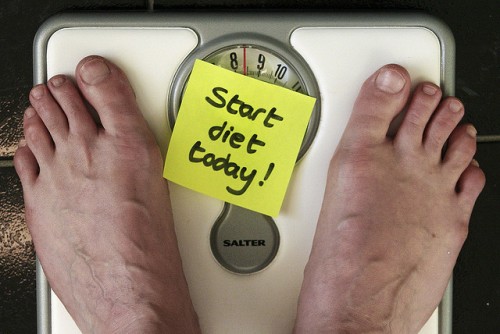
Dieting is probably not the first word that comes to mind when you think of debt reduction. However, when it comes to trying to reduce your debt, many of the steps you have to take are very similar to the steps you’d take when trying to reduce weight. Probably the most essential part to both is that to gain a healthy life with both, it requires a lifestyle change rather than a quick fix. Diets don’t work if there are only for a short period of time without making long-term fundamental changes in the way that you eat, and the same is true with debt reduction. Both require that you make changes to your current lifestyle to solve the issues and habits that have created the current situation.
Acknowledging That There is a Problem
Perhaps the best similarity between debt reduction and dieting is that you have to acknowledge that there’s a problem. Just as it’s easy to ignore poor eating habits, it’s very easy to ignore money problems. You might not want to believe that your debt keeps piling up or that you have no way to pay it all off. If you’re serious about trying to reduce your debt, the first step you need to take is acknowledging that you do have a problem that needs to be fixed.
Figuring Out the Exact Problem
The next step you need to take is figuring out the exact problem. Where is your debt coming from? Why can’t you pay it off? What is causing your inability to reduce your debt? Is it a lack of income or poor spending habits? Once you figure out the exact problem, you can then search for a solution.
Prioritize
Whenever you want to reduce your debt or start a diet, an important step is prioritizing your goals. Setting realistic goals should be your first priority. For instance, if you have multiple layers of debt, you might want to prioritize reducing one area of debt before another. If you have trouble saving money or deciding how to allocate debt reduction payments, you might need to prioritize money saving and spending habits before you can start actually paying off your debt.
Create aWweekly or Monthly Plan
Once you figure out what your problem is and how you would like to prioritize it, it’s a good idea to start small and create a weekly or monthly reduction plan instead of creating an overarching plan. As with dieting, it’s easy to think of the long term benefits rather than short term goals. However, it will be easier and more feasible for you to start your reduction plan on a small week by week scale rather than a larger scale.
Take Action
After you acknowledge, pinpoint, and prioritize your problem, the next step is taking action. Acknowledging and prioritizing your debt reduction plan is great, but the real importance is actually putting that plan into motion. You can plan things out all you want, but that plan becomes meaningless if you don’t actually do anything. Many people find that taking that first step to start their diets is difficult, so it makes sense that taking that first step to reduce your debt might also be difficult. But it’s a necessary step to take.
Trim the Excess
Trimming the excess is a great way to reduce your debt, just as it’s one of the steps people on diets are urged to take. When it comes to debt reduction, trimming the excess means reassessing your spending habits and cutting unneeded expenses. For example, you may be spending too much money eating out each week. That spending habit should be trimmed or pared down so that you can use the money to pay down your debt.
Track Your Habits
A good way to make sure you’re keeping up with your reduction plan is by keeping track of your spending, debt level, and payments toward reducing your debt. Tracking your habits will help you see how well (or poorly) you’re doing. Sometimes, making note of everything you’ve done is a great way to help yourself keep your plan moving.
Reduce a Little at a Time
When someone starts dieting, they generally start slowly. They might start eating smaller portions or cutting out one or two foods or even exercising for a little but each day until they eventually extend the amount they exercise or decide to cut out additional foods. Reducing your debt is similar. You should reduce a little at a time instead of trying to cut out a chunk all at once. It’s easier to stay with your reduction plan if you chip at it slowly instead of doing one lump payment one month and then nothing again for another few months.
Don’t Deprive Yourself
One of the most important things to keep in mind when reducing your debt is not to deprive yourself! When you diet, you don’t want to starve yourself and when you try and reduce your debt, you don’t want to cut yourself off from your bank account. It’s good to take things step by step and put a little towards your debt instead of throwing all your savings towards paying your debt down. You’ll still need that money for other bills, necessities, and potential emergencies.
Maintain Your Reduction Plan
Of course, after you start reducing your debt you need to make sure that you stick to your plan. It’s easy to commit to paying off debt for a month or two, but it’s also easy to get behind in your payments. Sticking with your plan to pay down your debt is definitely something you should push yourself to do.
(Photo courtesy of Alan Cleaver)
Comments